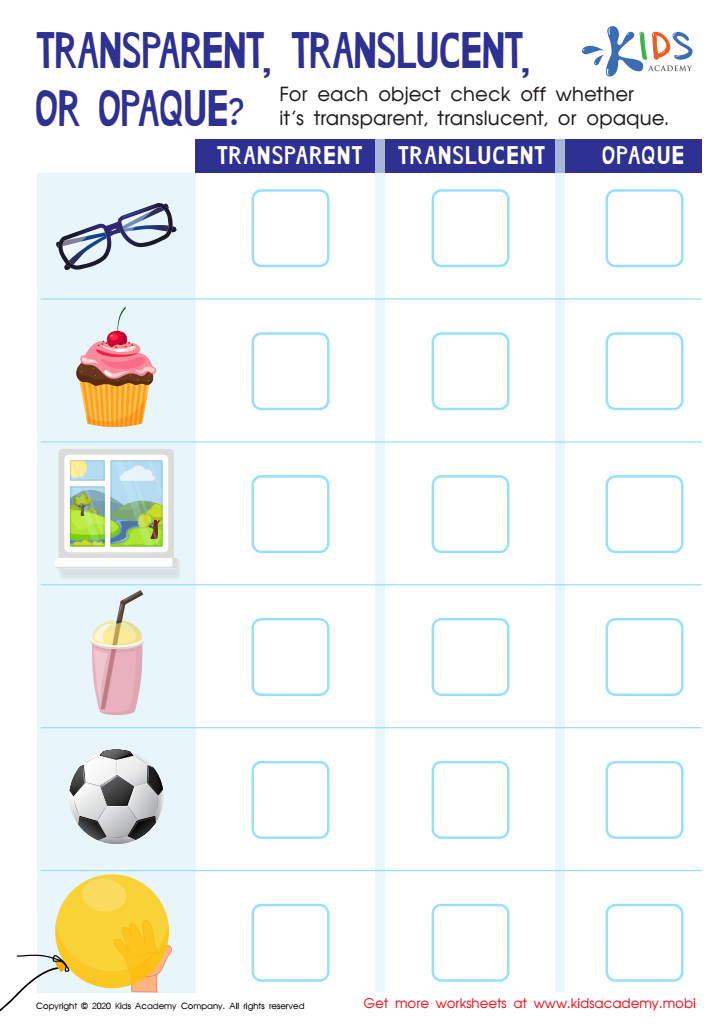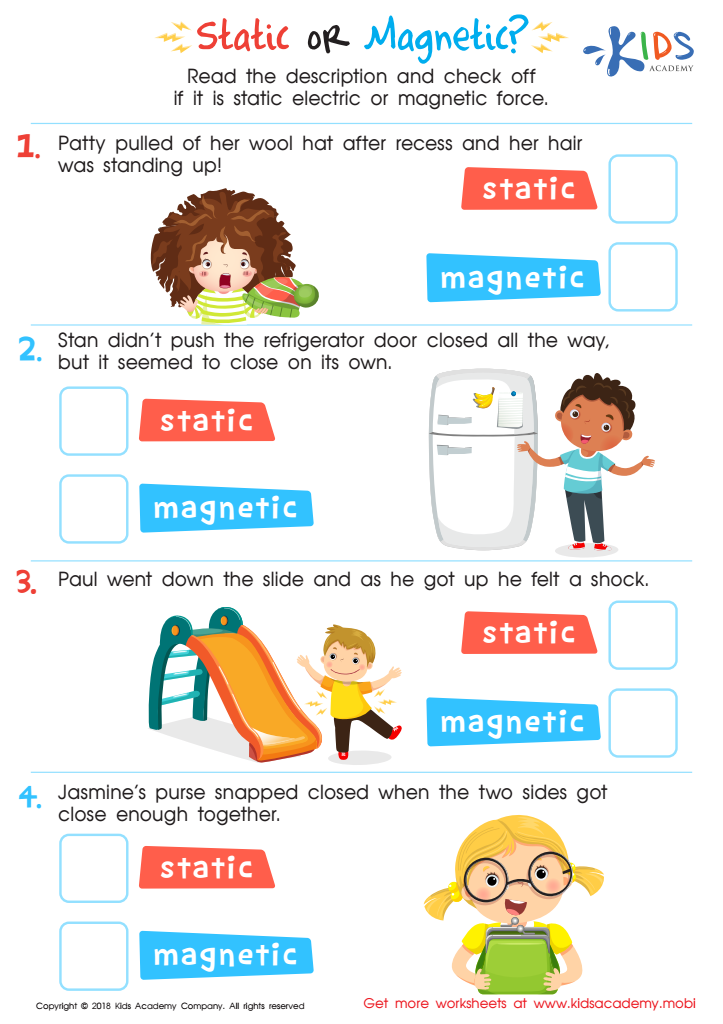Differentiating materials Worksheets for Kids
2 filtered results
-
From - To


Transparent, Translucent, or Opaque Worksheet


Static or Magnetic Printable Worksheet
Question/Answer
What are some effective activities to train students’ Differentiating materials skill when teaching them about Physical Science?
Effective activities include hands-on sorting tasks using a variety of materials (e.g., metals, plastics, woods), conducting simple tests for properties (e.g., magnetism, conductivity, density), and using observation charts or digital tools for students to record and compare findings. Incorporating puzzles or games that involve classifying materials based on their properties can also enhance engagement and learning.
How to test a Grade 1 student’s Differentiating materials skills?
To test a Grade 1 student's material differentiation skills, provide a variety of objects made from different materials (e.g., wood, plastic, metal, fabric). Ask the student to sort these objects into groups based on the material they are made of. Observe their ability to correctly identify and categorize the materials, noting any explanations they offer for their choices.
Why is the Differentiating materials skill important for Grade 1 students?
The Differentiating materials skill is important for Grade 1 students because it lays the foundation for critical thinking and problem-solving. By learning to distinguish between various materials, students develop observation, classification, and analytical skills. These abilities are essential for understanding scientific concepts, fostering curiosity, and building the groundwork for future learning across different subjects.
 Assign to the classroom
Assign to the classroom












